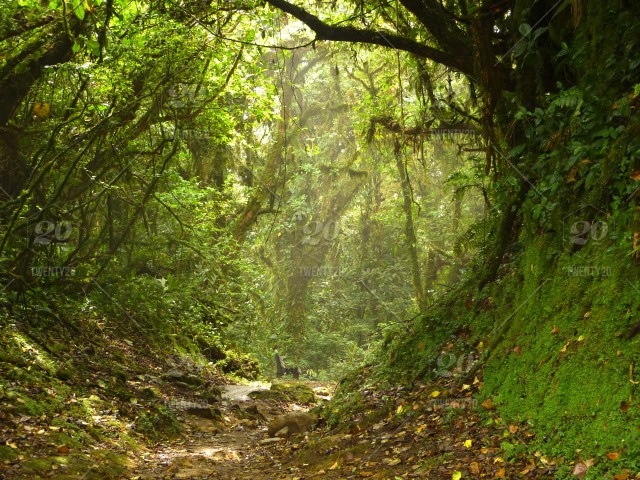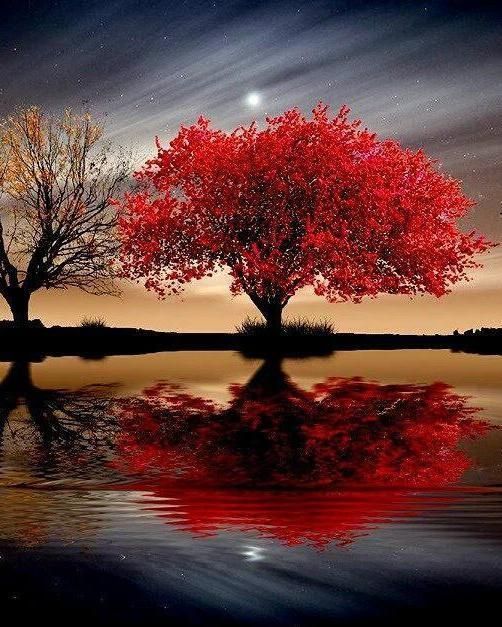Friday, August 12, 2011
Nature Mystical Colors
Gurgaon, Delhi, India
Gurgaon, Delhi, India
Monday, July 11, 2011
Modern 7 Wonders of the World
Great Wall of China
Great might be an understatement. One of the world’s largest building-construction projects, the Great Wall of China is widely thought to be about 5,500 miles (8,850 km) long; a disputed Chinese study, however, claims the length is 13,170 miles (21,200 km). Work began in the 7th century BCE and continued for two millennia. Although called a “wall,” the structure actually features two parallel walls for lengthy stretches. In addition, watchtowers and barracks dot the bulwark. One not-so-great thing about the wall, however, was its effectiveness. Although it was built to prevent invasions and raids, the wall largely failed to provide actual security. Instead, scholars have noted that it served more as “political propaganda.”
Chichén Itzá
Chichén Itzá is a Mayan city on the Yucatán Peninsula in Mexico, which flourished in the 9th and 10th centuries CE. Under the Mayan tribe Itzá—who were strongly influenced by the Toltecs—a number of important monuments and temples were built. Among the most notable is the stepped pyramid El Castillo (“The Castle”), which rises 79 feet (24 meters) above the Main Plaza. A testament to the Mayans’ astronomical abilities, the structure features a total of 365 steps, the number of days in the solar year. During the spring and autumnal equinoxes, the setting sun casts shadows on the pyramid that give the appearance of a serpent slithering down the north stairway; at the base is a stone snake head. Life there was not all work and science, however. Chichén Itzá is home to the largest tlachtli (a type of sporting field) in the Americas. On that field the residents played a ritual ball game popular throughout pre-Columbian Mesoamerica.
Petra
The ancient city of Petra, Jordan, is located in a remote valley, nestled among sandstone mountains and cliffs. It was purported to be one of the places where Moses struck a rock and water gushed forth. Later the Nabataeans, an Arab tribe, made it their capital, and during this time it flourished, becoming an important trade center, especially for spices. Noted carvers, the Nabataeans chiseled dwellings, temples, and tombs into the sandstone, which changed color with the shifting sun. In addition, they constructed a water system that allowed for lush gardens and farming. At its height, Petra reportedly had a population of 30,000. The city began to decline, however, as trade routes shifted. A major earthquake in 363 CE caused more difficulty, and after another tremor hit in 551, Petra was gradually abandoned. Although rediscovered in 1912, it was largely ignored by archaeologists until the late 20th century, and many questions remain about the city.
Machu Picchu
This Incan site near Cuzco, Peru, was “discovered” in 1911 by Hiram Bingham, who believed it was Vilcabamba, a secret Incan stronghold used during the 16th-century rebellion against Spanish rule. Although that claim was later disproved, the purpose of Machu Picchu has confounded scholars. Bingham believed it was home to the “Virgins of the Sun,” women who lived in convents under a vow of chastity. Others think that it was likely a pilgrimage site, while some believe it was a royal retreat. (One thing it apparently should not be is the site of a beer commercial. In 2000 a crane being used for such an ad fell and cracked a monument.) What is known is that Machu Picchu is one of the few major pre-Columbian ruins found nearly intact. Despite its relative isolation high in the Andes Mountains, it features agricultural terraces, plazas, residential areas, and temples.
Christ the Redeemer
Christ the Redeemer, a colossal statue of Jesus, stands atop Mount Corcovado in Rio de Janeiro. Its origins date to just after World War I, when some Brazilians feared a “tide of godlessness.” They proposed a statue, which was ultimately designed by Heitor da Silva Costa, Carlos Oswald, and Paul Landowski. Construction began in 1926 and was completed five years later. The resulting monument stands 98 feet (30 meters) tall—not including its base, which is about 26 feet (8 meters) high—and its outstretched arms span 92 feet (28 meters). It is the largest Art Deco sculpture in the world. Christ the Redeemer is made of reinforced concrete and is covered in approximately six million tiles. Somewhat disconcertingly, the statue has often been struck by lightning, and in 2014 the tip of Jesus’s right thumb was damaged during a storm.
Colosseum
The Colosseum in Rome was built in the first century by order of the Emperor Vespasian. A feat of engineering, the amphitheater measures 620 by 513 feet (189 by 156 meters) and features a complex system of vaults. It was capable of holding 50,000 spectators, who watched a variety of events. Perhaps most notable were gladiator fights, though men battling animals was also common. In addition, water was sometimes pumped into the Colosseum for mock naval engagements. However, the belief that Christians were martyred there—namely, by being thrown to lions—is debated. According to some estimates, about 500,000 people died in the Colosseum. Additionally, so many animals were captured and then killed there that certain species reportedly became extinct.
Taj Mahal
This mausoleum complex in Agra, India, is regarded as one of the world’s most iconic monuments and is perhaps the finest example of Mughal architecture. It was built by Emperor Shah Jahān (reigned 1628–58) to honor his wife Mumtāz Maḥal (“Chosen One of the Palace”), who died in 1631 giving birth to their 14th child. It took about 22 years and 20,000 workers to construct the complex, which includes an immense garden with a reflecting pool. The mausoleum is made of white marble that features semiprecious stones in geometric and floral patterns. Its majestic central dome is surrounded by four smaller domes. According to some reports, Shah Jahān wished to have his own mausoleum made out of black marble. However, he was deposed by one of his sons before any work began.
Saturday, July 9, 2011
Re-Birth of An Eagle
Friday, April 8, 2011
Awesome Reflection Photography
Awesome Reflection Photography
If we are to give a scientific definition of the reflection, then we’d say that it is a change in direction of a wavefront between two different media so that the wavefront returns into the medium from which it originated. So basically, a reflection is the image of an object mirrored on a shiny surface.
Reflections are commonly used by experienced photographers to create stunning pictures and even optical illusions, when one can’t distinguish the real image from the reflected one.
This post is all about this wonderful art of reflection photography. We’ve assembled a unique collection of photos that count for sure among the most beautiful reflection photography out there.
Stunning Reflection
Amazon Morning
On a Perfect Day
Hauroko Reflect
Evening in the Wetlands
Balanced
Yosemite Reflections
Droma Reflections
Seasonal Reflection
Luray Reflections in Dream Lake
Sunrise Reflections
Reflections of Love
Half Dome Reflection before Sunrise
Reflections of Eilean Donan Castle
Reflections at Drum Bridge
Color Reflection
Blue Reflections
Reflections Of Red
Cave Reflections
Reflections
Turquoise Reflections
Orange Reflections
Sunday, April 3, 2011
Art Found in a Rice Field
Stunning Crop Art has sprung up across Rice Fields in Japan. But this is no Alien Creation - the designs have been cleverly planted.
Farmers creating the huge displays use No Ink or Dye. Instead, different Colors of Rice Plants have been precisely and strategically arranged and grown in the paddy fields.
As summer progresses and the plants shoot up, the detailed artwork begins to emerge.
A Sengoku Warrior on Horseback has been created from hundreds of thousands of Rice Plants, the colors created by using different varieties, in Inakadate in Japan.
The largest and finest work is grown in the Aomori Village of Inakadate , 600 miles north of Toyko, where the tradition began in 1993.
Napolean on horseback can be seen from the Skies, created by precision planting and months of planning between villagers and farmers in Inkadate
Smaller works of Crop Art can be seen in other Rice-Farming Areas of Japan such as this image of Doraemon and Deer Dancers.
The farmers create the murals by planting little purple and yellow-leafed Kodaimai Rice along with their local green-leafed Tsugaru Roman variety to create the colored patterns between planting and harvesting in September.
Closer to the image, the careful placement of thousands of rice plants in the paddy fields can be seen
The different varieties of Rice Plant grow alongside each other to create the Masterpieces
Friday, June 18, 2010
2 Suns on 21th June 2010
as NO ONE WHO IS ALIVE TODAY
will ever see it again
Star Aderoid will be the brightest in the sky, starting 10 June.
It will look as large as the Sun from naked eye.
This will culminate on 21st June when the Star comes within 34.65M miles of the Earth.
Be sure to watch the sky on 21st June at 12:30 pm.
It will look as if the Earth has 2 Suns..!!

Subscribe to:
Posts (Atom)

















































